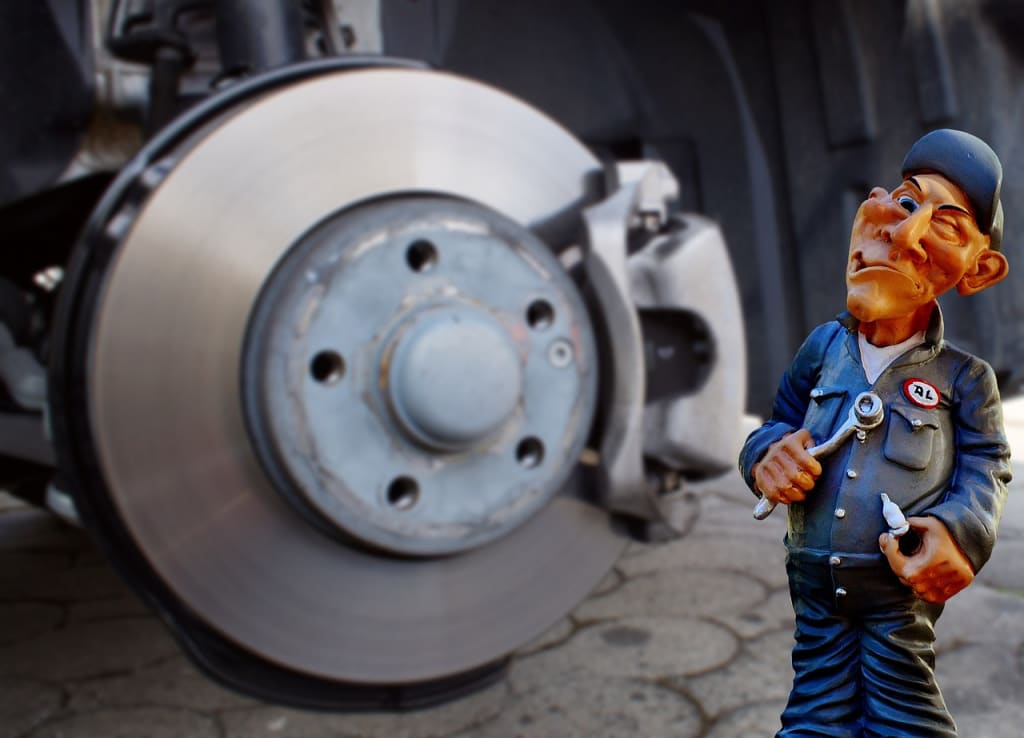Mastering Braking Power: A Step-by-Step Guide to Changing Brake Pads
Take Control of Your Safety: DIY Brake Pad Replacement Made Easy

A Comprehensive Guide: How to Change Brake Pads
Brake pads are a vital component of a vehicle's braking system, responsible for creating the necessary friction to slow down or stop the vehicle. Positioned on either side of the brake rotor, brake pads are made of a composite material that is designed to withstand high temperatures and provide efficient braking performance. When you press the brake pedal, hydraulic pressure is applied, causing the brake caliper to squeeze the brake pads against the rotor. This friction generates the necessary force to slow down or halt the rotation of the wheels. Over time, brake pads wear down due to constant use, necessitating their replacement to maintain optimal braking efficiency and ensure the safety of both the driver and passengers on the road.
Introduction
Proper maintenance of your vehicle's brake system is crucial for ensuring safety on the road. One essential task is changing brake pads, a relatively straightforward process that can save you money and give you peace of mind. In this article, we will provide a step-by-step guide on how to change brake pads, allowing you to tackle this DIY project confidently.
Step 1: Gather the Necessary Tools
Before beginning the brake pad replacement process, gather the following tools: a lug wrench, a jack, jack stands, a C-clamp or brake piston tool, a socket set, brake grease, a wire brush, and a brake pad wear sensor (if applicable). Ensure that you have all the tools on hand before starting the procedure.
Step 2: Prepare the Vehicle
Park your vehicle on a flat surface and engage the parking brake. Loosen the lug nuts on the wheels where you'll be changing the brake pads, but do not remove them just yet. Place the jack beneath the vehicle's recommended jacking points and raise it until the wheel is off the ground. Secure the vehicle on jack stands for added safety.
Step 3: Remove the Old Brake Pads
Using a socket wrench, remove the lug nuts and take off the wheel. Locate the brake caliper, which is typically secured with bolts or pins. Remove these fasteners and slide the caliper off the rotor. Take care not to strain or damage the brake hose. Once the caliper is off, you can access the brake pads. Inspect them for wear and note their positioning for later reference.
Step 4: Replace the Brake Pads
Before installing the new brake pads, inspect the brake rotor's condition. If there are any deep grooves or significant damage, it is advisable to have the rotors resurfaced or replaced. Apply brake grease to the back of the new brake pads to reduce noise and vibration. Insert the brake pads into the caliper bracket, ensuring they align correctly with the rotor.
Step 5: Reassemble the Brake Caliper
Carefully slide the brake caliper back over the rotor, making sure it aligns with the brake pads. If the caliper piston is fully extended, you may need to use a C-clamp or brake piston tool to compress it. Secure the caliper in place by reinserting and tightening the bolts or pins you removed earlier.
Step 6: Final Steps
Double-check that all components are properly reassembled. Reattach the wheel and hand-tighten the lug nuts before lowering the vehicle from the jack stands. Once the vehicle is back on the ground, use a torque wrench to tighten the lug nuts to the manufacturer's specifications. Repeat the entire process for the remaining wheels.
Conclusion
Learning how to change brake pads is an essential skill for any vehicle owner. By following this step-by-step guide, you can confidently replace your brake pads, ensuring optimal braking performance and safety on the road. Remember to exercise caution, adhere to proper safety measures, and consult your vehicle's manual for any model-specific instructions. If you're uncertain about any aspect of the process, it's always wise to seek professional assistance. Stay proactive in maintaining your vehicle, and enjoy the peace of mind that comes with properly functioning brakes.





Comments
There are no comments for this story
Be the first to respond and start the conversation.